482.
Searching for the beginning of
Oromanga in the C text we will
find this place will correspond
to Dubhe
(α) in Ursa Major (Itzam-Yeh,
Seven-Macaw).
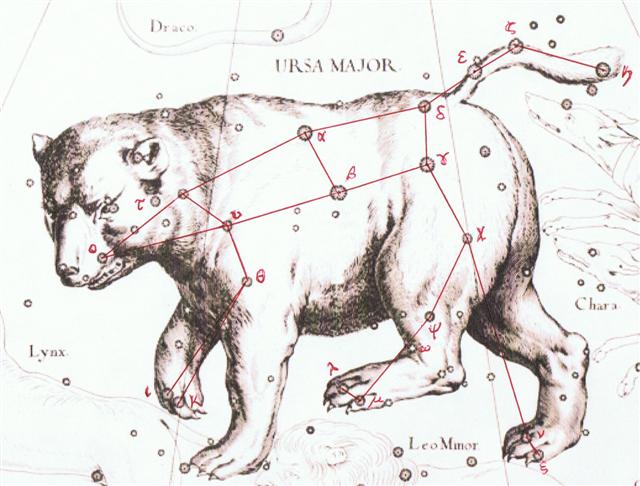
... I have guessed place names on Easter
Island were iterated in Manuscript E at
their correct positions as determined by
the Full Moon - whose face was
reflecting the positions of the Sun half
a year away (i.e. among the heliacal
stars):
|
NAKSHATRA DATES: |
|
5 |
HANGA HOONU |
DEC 26 (360) - 30 (364) |
|
27 |
OROMANGA |
DEC 31 (365) - JAN 26 (391) |
|
5 |
PAPA O PEA |
JAN 27 (392) - 31 (396) |
... the Palenque scribes repeated
Creation again and described it as
'it was made visible, the image at
Lying-down-Sky, the
First-Three-Stone-Place'. Then we
learned that five hundred and
forty-two days later (1.9.2 in the
Maya system), Hun-Nal-Ye
'entered or became the sky' (och
ta chan). This 'entering'
event occurred on February 5, 3112
B.C. The act of 'entering the sky'
is recorded on another extraordinary
painted pot.
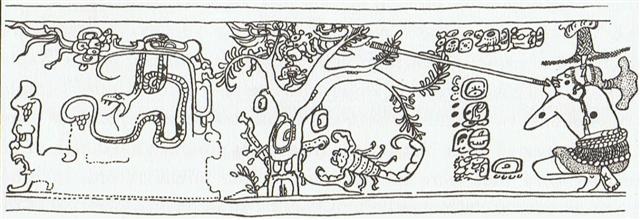
This pot depicts one of the Hero Twins
(One-Ahaw in the Classic texts and
One-Hunaphu in the K'iche' Popol Vuh)
and a great bird who is trying to land
in a huge ceiba tree heavy with fruit.
This mythical bird is Itzam-Yeh,
Classic prototype of Wuqub-Kaqix,
'Seven-Macaw', of Popol Vuh fame.
In that story, in the time before the
sky was lifted up to make room for the
light, the vainglorious Seven-Macaw
imagined himself to be the sun. Offended
by his pride, the Hero Twins humbled him
by breaking his beautiful shining tooth
with a pellet from their blowgun. This
pot shows One-Ahaw aiming at the bird as
he swoops down to land in his tree. As
Itzam-Yeh lands on his perch, the
text tells us he is 'entering or
becoming the sky'. This particular
'sky-entering' is not the one mentioned
in the Palenque text. It is the final
event that occurred in the previous
creation before the universe was remade.
Before the sky could be raised and the
real sun revealed in all its splendor,
the Hero Twins had to put the false sun,
Itzam-Yeh, in his place. If the
date on this pot corresponds to that
pre-Creation event, as we believe it
does, then Itzam-Yeh was defeated
in 12.18.4.5.0 1 Ahaw 3 K'ank'in
(May 28, 3149 B.C.). After the new
universe was finally brought into
existence, First Father also entered the
sky by landing in the tree, just as
Itzam-Yeh did
...'
Dubhe was at Ca6-26
(166):
|
tagata oho
rima - ki te marama |
koia kua oho |
ki te marama |
kua moe |
 |
 |
 |
 |
|
Ca6-17 (157) |
Ca6-18 |
Ca6-19 |
Ca6-20 |
|
CLOSE TO THE FULL MOON: |
|
"July 15 (196 = 157 + 39) |
16 |
17 |
Hora
Iti 18 |
|
... They made camp and rested at
the Bay of Flies for a week (etahi
pohitu). On the eighteenth
day of the month of July (Anakena)
they went on from Hanga
Takaure. They climbed
uphill, went on, and reached
Poike. When they arrived,
they looked around and named
(the place) Poike A Hau Maka.
They climbed up farther to
Pua Katiki. When they
arrived there, they looked
around and named (the place)
Pua Katiki A Hau Maka. They
came down from the height, from
the mountain, from Pua
Katiki, and reached
Maunga Teatea. They looked
around and gave the name
Maunga Teatea A Hau Maka.
They all descended, they all
came down from Pua Katiki.
They reached Mahatua, saw
it, looked around, and gave the
name Mahatua A Hau Maka.
Then they went on and came to
Taharoa. They saw it, looked
around, and gave the name
Taharoa A Hau Maka ... |
|
'July 29 (210 = 237 - 27) |
30 |
31 |
'Aug 1 |
|
Aug 25 (237)
Extended Net-26b (Ox)
μ Hydrae
(157.1) |
26
Maru-sha-arkat-Sharru-15 (4th
Son behind the King)
SHIR (Possessing Luminous Rays)
=
ρ
Leonis
(158.9) |
27
p Carinae (159.3) |
28
φ Hydrae (160.3) |
|
CLOSE TO THE SUN: |
|
... The leap day was introduced
as part of the Julian reform.
The day following the Terminalia
(February 23) was doubled,
forming the 'bis sextum -
literally 'double sixth', since
February 24 was 'the sixth day
before the Kalends of March'
using Roman inclusive counting
(March 1 was the 'first day').
Although exceptions exist, the
first day of the bis sextum
(February 24) was usually
regarded as the intercalated or
'bissextile' day since the third
century. February 29 came to be
regarded as the leap day when
the Roman system of numbering
days was replaced by sequential
numbering in the late Middle
Ages ... |
|
HANGA TAKAURE |
Poike,
Pua Katiki,
Maunga Teatea, Mahatua,
Taharoa |
|
Bissextum
Febr 24 (420 = 2 * 210)
δ Tucanae (340.1), ρ Cephei
(340.2), ν Gruis (340.3), ζ
Aquarii, δ Gruis (340.4), 5/1100
Lac. (340.7), σ Aquarii, 6/650
Lac. (340.9)
*299 = *340.4 - *41.4
PROCYON (α Canis Minoris) |
25
υ Oct. (341.0), α/91 Lac.
(341.1),
HOMAN (Hero) = ζ Pegasi,
β Piscis Austrini (341.2), ν
Tucanae (341.5), υ Aquarii
(341.9) |
26
η Aquarii (342.1), σ Gruis
(342.4),
SITULA (Water-jar) = κ Aquarii
(342.7)
*301 = *342.4 - *41.4 |
27 (58)
ε Piscis Austrini (343.5), ο
Pegasi, β Gruis (343.8) |
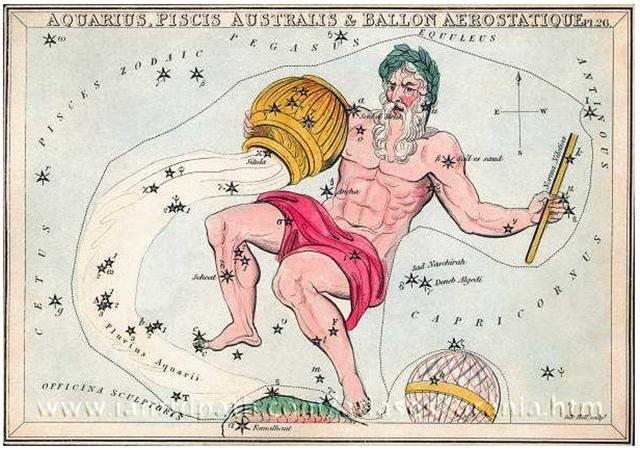 |
|
kua ka te ahi
i te rima aueue - te ika |
te marama kua
hua |
marama kua tuu
i te kihikihi |
|
Aue.
Ah, alas. Aueue, oh. P
Pau., Ta.: aue, alas.
Mgv.: aue, auhe,
alas. Mq.: aue, oh, alas;
auhe, a sigh. Exclamation
in general representing the most
primordial type of speech, it
seems that this may be reduced
to recognizable elements. The
e is throughout these
languages a vocative or hailing
sign, commonly postpositive in
relation to the person hailed.
In the examination of au
we have shown that the primal
first person singular
designation is u. With
the comparatively scanty
material afforded by this
vocabulary we may not attempt ot
define the use of a but
we have no hesitation in noting
that proof based on wider
studies will show it to have,
inter alia, a characteristic
function as a word-maker. In a
very high degree, then, a-u-e
is represented by a common
English interjection 'oh my!' in
which oh = a, my = u,
and e = !. Churchill.
What is this cry which our
primitive islanders share with
the animals? Look at its
elements, all full-throated.
First we have a, the
sound of mouth open, fauces
open, lungs full of air. As air
expires the sound recedes in the
mouth towards the palate and we
find the u. Last comes
the conscious finish of the
utterance, the muscles begin to
retract, the sound-making point
is forced forward and the sound
is e. If the man had but
a few more cubic centimeters of
lung capacity he could attain
cow volumne for his cry, or
interjection, since it amounts
to the same thing. Churchill 2.
When the new moon appeared women
assembled and bewailed those who
had died since the last one,
uttering the following lament:
'Alas! O moon! Thou has returned
to life, but our departed
beloved ones have not. Thou has
bathed in the waiora a Tane,
and had thy life renewed, but
there is no fount to restore
life to our departed ones. Alas
... (Makemson)
|
 |

Ohiro
(Mercury) |

Oata |
 .. .. |
|
... The hoaka, or arch
over the door of a house, was
named after the shape of the
Moon on that night, that is,
concave with the points curving
up on both sides like horns... |
|
Ca6-21 |
Ca6-22 |
Ca6-23 |
Ca6-24 (164 = 62 * 4 - 84) |
|
CLOSE TO THE FULL MOON: |
|
'Aug 2 (214) |
3 |
4 |
5 |
|
... Once upon a time there was
an old woman who owned a great
potato field (mara) where
she planted her potatoes in
spring and harvested them in
autumn. She was famous all
around for her many varieties of
wonderful potatoes, and she had
enough of them to sell at the
market place. She planted her
potatoes 7 in a row, placing her
foot in front of her as a
measure from one potato to the
next. Then she marked the place
with a bean - which would also
give nourishment to the
surrounding potatoes. Next she
changed variety and planted 7
more followed by another bean,
and this was the pattern she
followed until all her 214
varieties had been put down in
their proper places. She had
drawn a map which she followed
and
from
where each sort of potato could
be located at the proper time
for its harvest ... |
|
Aug 29
no star listed (161 = 249 - 88) |
30 (242 = 2 * 121 = 11 * 22)
VATHORZ POSTERIOR = θ Carinae
(162.1),
PEREGRINI = μ Velorum,
η Carinae
(162.6) |
31
ν Hydrae (163.1) |
Sept 1 (12 * 12 + 100)
no star listed
ALTAIR (α Aquilae)
|
|
... This [η
Carinae] is one of the most
noted objects in the heavens,
perhaps even so in almost
prehistoric times, for
Babylonian inscriptions seem to
refer to a star noticeable from
occasional faintness in its
light, that Jensen thinks was
η.
And he claims it as one of the
temple stars associated with Ea,
or Ia, of Eridhu¹, the Lord of
Waters, otherwise known as
Oannes², the mysterious human
fish and greatest god of the
kingdom.
¹ Eridhu, or Eri-duga, the Holy
City, Nunki, or Nunpe, one of
the oldest cities in the world,
even in ancient Babylonia, was
that kingdom's flourishing port
on the Persian Gulf, but, by the
encroachment of the delta, its
site is now one hundred miles
inland. In its vicinity the
Babylonians located their sacred
Tree of Life.
² Berōssōs described Oannes as
the teacher of early man in all
knowledge; and in mythology he
was even the creator of man and
the father of Tammuz and Ishtar,
themselves associated with other
stars and sky figures. Jensen
thinks Oannes connected with the
stars of Capricorn; Lockyer
finds his counterpart in the god
Chnemu of Southern Egypt; and
some have regarded him as the
prototype of Noah
...

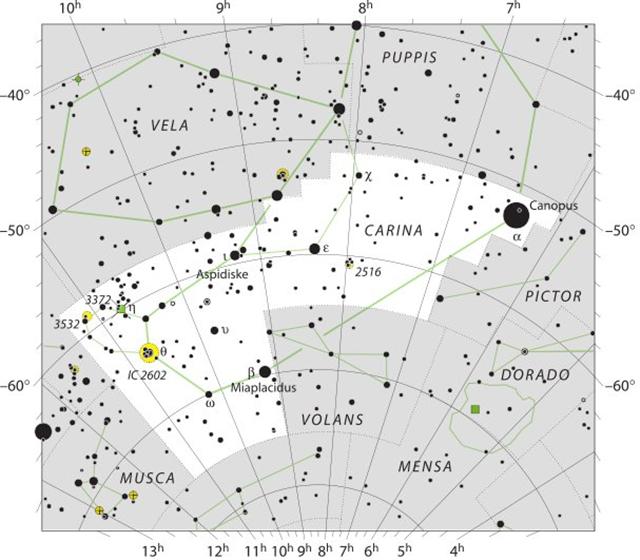 |
|
CLOSE TO THE SUN: |
|
HANGA HOONU |
|
...
Again they went on and reached
Hanga Hoonu. They saw it,
looked around, and gave the name
Hanga Hoonu A Hau Maka.
On the same day, when they had
reached the Bay of Turtles, they
made camp and rested. They all
saw the fish that were there,
that were present in large
numbers - Ah! Then they all went
into the water, moved toward the
shore, and threw the fish (with
their hands) onto the dry land.
There were great numbers (?
ka-mea-ro) of fish. There
were tutuhi, paparava,
and tahe mata pukupuku.
Those were the three kinds of
fish. After they had thrown the
fish on the beach, Ira
said, Make a fire and prepare
the fish! When he saw that there
was no fire, Ira said,
One of you go and bring the fire
from Hanga Te Pau!
One of the young men went to the
fire, took the fire and
provisions (from the boat),
turned around, and went back to
Hanga Hoonu. When he
arrived there, he sat down. They
prepared the fish in the fire on
the flat rocks, cooked them, and
ate until they were completely
satisfied. Then they gave the
name The rock, where (the fish)
were prepared in the fire with
makoi (fruit of
Thespesia populnea?) belongs
to Ira (Te Papa Tunu
Makoi A Ira). They remained
in Hanga Hoonu for five
days ... |
|
DEC 26 (360 = 424 - 64) |
27 |
28 |
29 |
|
Febr 28 (59 = 2 * 29½)
ρ Gruis (344.0),
MATAR (Rain) = η Pegasi
(344.2), η Gruis (344.6), β Oct.
(344.7) |
29 (425 = 365 + 60)
λ Pegasi (345.0), ξ Pegasi
(345.1), ε Gruis (345.3), τ
Aquarii (345.7), ξ Oct. (345.8),
μ Pegasi (345.9) |
March 1
ι Cephei (346.0),
λ Aquarii, γ Piscis Austrini, σ
Pegasi (346.5) |
2
SCHEAT AQUARII = δ
Aquarii (347.0),
ρ
Pegasi (347.2),
δ
Piscis Austrini (347.4),
FOMALHAUT (Mouth
of the Fish) =
α
Piscis Austrini,
τ
Gruis (347.8) |
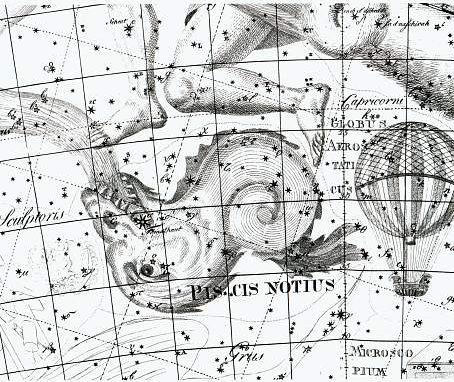 |
|
tagata marama |
koia ra |
marama |
- |
kua Rei te vae |
 |
 |
 |
 |
 |
|
Ca6-25 |
Ca6-26 |
Ca6-27 |
Ca6-28 (168) |
Ca7-1 |
|
CLOSE TO THE FULL MOON: |
|
"July 23 (204) |
Hora Iti 24 |
25 |
26 |
27 |
|
... The Explorers arrived at
Rangi Meamea in "July 23 (Anakena
23) and there they stayed on
the beautiful beach (long
sand-bank) of Oromanga
for 27 days ...
Maga.
Branch (of tree). Magahaiga,
part of the arm near the armpit,
armpit.
Magamaga:
1. Finger (rima matu'a
neanea, thumb; tuhi
henua, index finger;
roaroa tahaga, middle
finger; tuhia háûa, ring
finger; komaniri-komanara,
little finger).
2. Seaweed (shaped like small
fingers). Vanaga. 1. (mama
2) A mouthful; maga nuinui,
to gobble. 2. Garbage. 3. Index
finger. 4. A branch; magamiro,
a branch, a limb; magamaga,
fork, finger, claw, rod;
magamaga miro, a
branch, a limb; magamaga rima,
finger; magamaga vae,
toe; magamaga tumu, great
toe; hakamaga, a roof;
magaga, fork; magatuhi,
index finger; hakamagaturu,
slope of a roof.
Churchill. |
|
'Aug 6 |
7 |
8 (220) |
9 |
10 |
|
Sept 2 (204 + 141)
Wings-27 (Snake)
η
Octans (165.4),
ALKES (Shallow Basin) =
α
Crateris
(165.6)
*124 = *165.4 - *41.4
|
3
ANA-TIPU-4 (Upper-side-pillar -
where the guards stood)
MERAK (Loin) = β Ursae Majoris
(166.2),
DUBHE (Bear) = α
Ursae Majoris
(166.7) |
4
11h (167.4)
χ Leonis, χ¹ Hydrae (167.1), χ²
Hydrae (167.3)
*126 = *167.4 - *41.4 |
5 (248 = 104 + 144)
AL SHARAS (The
Ribs) =
β
Crateris
(168.6) |
6 (329 - 80)
Al Zubrah-9 (The Mane) /
Purva Phalguni-11 (First Reddish
One)
ZOSMA (Girdle) =
δ
Leonis
(169.2),
COXA (Hips) =
θ
Leonis
(169.4)
*128 = *169.4 - *41.4 |
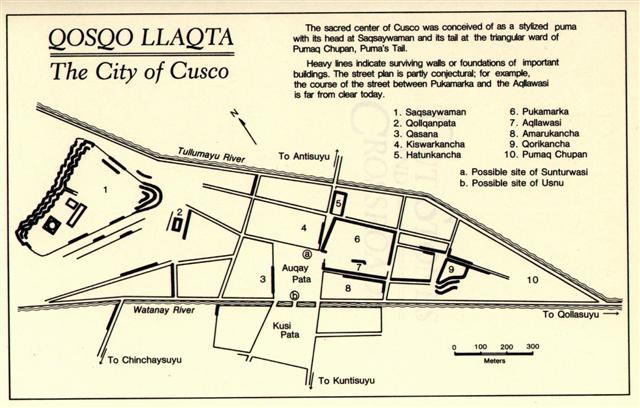 |
|
CLOSE TO THE SUN: |
|
HANGA HOONU |
OROMANGA |
|
DEC 30 (364) |
31 |
JAN 1 (366) |
2 (431 - 64 = 367) |
3 |
|
March 3
FUM AL SAMAKAH (Mouth of the
Fish) =
β
Piscium
(348.3),
ζ
Gruis (348.5),
ο
Andromedae (348.9) |
4
(365 + 64 = 429)
Al Fargh al Mukdim-24 (Fore
Spout) /
Purva Bhādrapadā-26 (First of
the Blessed Feet) /
House-13 (Pig)
SCHEAT PEGASI =
β
Pegasi,
π
Piscis Austrini (349.3),
κ
Gruis (349.4),
MARKAB PEGASI =
α
Pegasi
(349.5)
*308 = *349.4 - *41.4 |
3-5
23h (350.0)
υ, θ Gruis (350.0), π Cephei
(350.6), ι Gruis (350.9) |
6 (431 = 351 + 80)
SIMMAH = γ Piscium
(351.7) |
7 (432 = 366 + 66)
φ Aquarii (352.0), ψ Aquarii (352.4), χ Aquarii
(352.6), γ Tucanae, φ Gruis
(352.8)
*311 = *352.4 - *41.4 |

... Horapollo, the grammarian of
Alexandria, about A.D. 400,
tells us that the crane was the
symbol of a star-observer in
Egypt ... |
|
15 |
tagata - marama |
tagata |
kua moe |
puhi te ahi - rave i
te ika |
|
Puhi.
1. To
blow; to light a
fire; to extinguish,
to blow out;
he-puhi te umu,
to light the fire
for the earth oven.
2. To fish for
lobsters at night
using a bait (but
during the day one
calls it hî);
puhiga, night
fishing spot.
Vanaga. To blow;
puhi mai, to
spring up; pupuhi,
wind, fan, to blow,
puffed up, to blow
fresh, to ferment,
to swell, to bloat,
to spring out, to
gush, yeast;
pupuhi vai,
syringe; pupuhi
eve, squirt;
pupuhi heenua,
volley; pupuhi
nunui, cannon;
pupuhi nui,
swivel gun;
ahuahu pupuhi,
amplitude; vai
pupuhi, water
which gushes forth;
pupuhihia, to
carry on the wind;
hakapupuhi,
to gush, leaven,
volatilize;
puhipuhi, to
smoke, to smoke
tobacco, a pipe.
Churchill. |

Maharu
|

Ohua
|

Otua
|
 |
|
Ca7-17 |
Ca7-18 (186) |
Ca7-19 |
Ca7-20 |
|
Haru.
Haruharu. To
rob, to steal, to
arrest, to seize, to
cling, to grasp
unexpectedly, to
take by force;
robber (aruaru,
aaru). Pau.:
haru, to
extort, to carry
off, to usurp. Ta.:
haru, robber,
to seize by force.
Churchill.
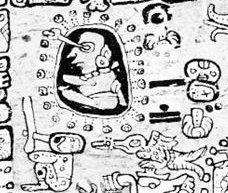
|
Rob |
Fruit |
Back |
|
Mohalu
|
Hua |
Akua |
|
Maharu
|
Ohua
|
Otua
|
|
W |
Z |
H |
 |
|
CLOSE TO THE FULL
MOON: |
|
Equinox
Hasta-13 (Hand) /
Chariot-28 (Worm)
GIENAH (Wing) =
γ
Corvi
(185.1),
ε
Muscae (185.2),
ζ
Crucis (185.4),
ZANIAH (Corner) = η
Virginis
(185.9)
*144.0 = *185.4 -
*41.4 |
Sept 23 (266)
CHANG SHA (Long
Sand-bank) = ζ Corvi
(186.3)
45 + 180 = 225 = 266
- 41 |
24
INTROMETIDA
(Inserted) =
ε
Crucis
(187.4),
ACRUX
=
α
Crucis
(187.5)
*146.0 = *187.4 -
*41.4 |
25
γ
Com. Berenicis
(188.0),
σ
Centauri (188.1),
ALGORAB =
δ
Corvi
(188.5),
GACRUX =
γ
|
|
CLOSE TO THE SUN: |
|
OROMANGA |
|
JAN 18 |
19 |
20 (= 84 - 64) |
21 |
|
March 23
|
24 (266 - 183 =
83) |
25 (Julian equinox) |
26 |
|
χ Pegasi (2.1), θ
Andromedae (2.7) |
σ Andromedae (3.0),
ι Ceti (3.3), ζ
Tucanae (3.5), ρ
Andromedae, π
Tucanae (3.7) |
no star listed (4) |
ANKAA = α Phoenicis,
κ Phoenicis (5.0)
ALPHARD (α Hydrae)
|
|
te
kava - erua marama |
e
marama noho i tona
nohoga |
te
hare pure e tagata
noho ki roto |
|
Hare.
House, family, home.
Vanaga. House,
cabin, habitation,
building, hut,
structure; hare
iti, hut;
hare itiiti
no, cabin;
hare kahu, tent;
hare neinei,
latrine; hare no
iti, cell;
hare nunui,
palace; hare
pohurihuri,
prison; hare pure,
chapel, church;
ki te hare, at
home. Harepepe,
kelp. Harepiko,
a. asylum, place of
refuge; b. ambush,
snare. Harepopo,
shed. Harepopokai,
storehouse.
Churchill.
Pure.
Cowrie (Cypraea
caput draconis);
pure vaka,
another type of
cowrie, which can
float on the sea
like a diminutive
boat (vaka).
Vanaga. 1. To pray,
to supplicate,
invocation, prayer;
hare pure,
church, chapel;
tae pure,
irreverence;
purega, prayer P
Pau., Mgv., Mq.,
Ta.: pure, to
pray. In Samoa,
Tonga, Niuē,
Futuna, Uvea,
pule
means to command.
2. A shell T. P
Pau.:
hakapurepure, to
dye, to color. Mq.:
pué, the
porcelain shell.
Ta.: pure, a
mark. Purepure,
spotted, dappled;
ragi purepure,
dappled sky.
Purepurea,
spotted. P Pau.:
hakapurepure, to
dye, to color. Mgv.:
purepure,
printed cloth;
akapurepure, to
paint in different
colors. Mq.:
puépué, covered
with pale scars.
Ta.: purepure,
spotted, dappled.
Churchill.
Pureva,
rock, stone (small
enough to be thrown
by hand). Vanaga.
Pureva,
to throw a stone.
Ta.:
Pureva,
to be on the eve of
going. Ha.:
puleva,
to float here and
there. Churchill.
Pau.: Pure-hiva,
a butterfly. Mgv.:
pure-rehue,
id. Ta.: pure-hua,
a moth. Mq.:
pure-hua, id.
Ma.: pure-hua,
id. Churchill. |

Maúre
|

Ina-ira
|

Rakau
|

Omotohi
|
|
Ca7-21 |
Ca7-22 → π |
Ca7-23 → 216 = 3 / 5
* 365 |
Ca7-24 (192) |
|
CLOSE TO THE FULL
MOON: |
|
Sept 26
γ
Muscae (189.0),
AVIS
SATYRA (Bird of the
Satyrs) =
η
Corvi
(189.3),
ASTERION (Starry) =
β
Canum Ven.
(189.5),
KRAZ
= β Corvi,
κ Draconis (189.7) |
27 (270)
α Muscae (190.2), τ
Centauri (190.5), χ
Virginis (190.7)
ALDERAMIN (α Cephei)
|
28
Al Áwwā'-11 (The
Barker) /
Shur-mahrū-shirū-18
(Front or West Shur)
Sombrero Galaxy =
M104 Virginis
(191.1),
ρ
Virginis (191.4),
PORRIMA =
γ
Virginis,
γ
Centauri (191.5)
*150.0 = *191.4 -
*41.4
104 = 31 + (365 -
292 |
29 (2 * 136)
ι Crucis (192.2), β
Muscae (192.5),
MIMOSA = β Crucis
(192.9) |
|
... The Sensitive
plant (Mimosa
pudica L.) is a
creeping annual or
perennial herb often
grown for its
curiosity value: the
compound leaves fold
inward and droop
when touched,
re-opening within
minutes. Mimosa
pudica is native
to Brazil, but is
now a pantropical
weed. Other names
given to this
curious plant are
Humble plant,
TickleMe plant,
Shame plant,
Sleeping Grass,
Prayer plant,
Touch-me-not,
Makahiya
(Philippines,
meaning 'shy'),
Mori Vivi (West
Indies), mate-loi
(false death)
(Tonga) ... In the
evening the leaflets
will fold together
and the whole leaf
droops downward. It
then re-opens at
sunrise
...
Rau
hei. 1.
Branch of mimosa. 2.
Killed enemy. 3.
Hanged 'fish'. 'Branche
du mimosa (signe de
mort), ennemie túe
(poisson suspendu)'
according to
Jaussen. Barthel. |
|
CLOSE TO THE SUN: |
|
OROMANGA |
|
JAN 22 |
23
(365 + 23 = 388) |
24 (= 88 - 64) |
25 |
|
March 27 |
28 |
29 (88) |
30 |
|
λ Phoenicis (6.3), β
Tucanae (6.4)
45.0 = 86.4 - 41.4 |
ANDROMEDA GALAXY
(M31),
π Andromedae (7.7)
31 = 104 - (365 -
292) |
ε Andromedae (8.2),
DELTA = δ Andromedae
(8.4),
SCHEDIR (Breast) = α
Cassiopeiae
(8.6), ζ Andromedae,
μ Phoenicis (8.9)
*333 = *150 + *183 |
ξ
Phoenicis (9.0),
ρ
Tucanae (9.1),
DENEB KAITOS (Tail
of the Sea Beast) =
β Ceti,
η
Phoenicis (9.4),
AL NITHĀM (String of
Pearls) =
φ¹
Ceti
(9.6)
*334 = *375.4 -
*41.4 |
 |
|
tagata i te marama |
koia ra |
ki
te marama |
kua moe ra |
te
ahi i te rima aueue |
 |
 |
 |
 |
 |
|
Ca7-25 (193) |
Ca7-26 |
Ca7-27 |
Ca7-28 |
Ca7-29 |
|
CLOSE TO THE FULL
MOON: |
|
"Aug 20 (232 = 273 -
41) |
Hora Iti 21 |
22 |
23 |
24 (236 = 8 * 29½) |
|
... He (i.e., Ira)
said, 'Let's go! We
shall go to Papa
O Pea'. They all
got up and moved on.
On the twentieth day
of the month of
August ('Hora Iti')
they went to Papa
O Pea. They all
went and came to
Papa O Pea,
looked around in
Papa O Pea, and
gave the name 'Papa
O Pea A Hau Maka'.
They stayed five
days in Papa O
Pea ...
Pea.
(Also peapea):
To go away with bits
of food or mud
sticking to one's
face or garments.
Vanaga. Peaha,
perhaps ... maybe,
chance, doubtful;
reoreo peaha
... Ma.: pea,
perhaps. Peapea,
an erasure ...
hakapeapea ...
Peau, to
sweep all away. Ma.:
peau, to be
turned away.
Churchill. Peau,
a wave (Sa., To.,
Fu., Fotuna, Niuē,
Mq., Nuguria); Mgv.:
peau,
peahu, id.
Churchill 2. |
|
Sept 30 (273 = 3 *
91)
no star listed (193) |
Oct 1
κ
Crucis (194.4),
ψ
Virginis (194.5),
μ
Crucis,
λ
Crucis (194.6),
ALIOTH (Fat Tail) =
ε
Ursae Majoris,
ι
Oct.
(194.8)
*153 = *194.4 -
*41.4 |
2
MINELAUVA =
δ
Virginis
(195.1),
COR CAROLI =
α
Canum Ven.
(195.3) |
3
δ
Muscae (196.5) ,
VINDEMIATRIX (Grape
Gatherer) =
ε
Virginis
(196.8) |
4
13h (197.8)
ξ¹ Centauri (197.1),
ξ² Centauri (197.9 |
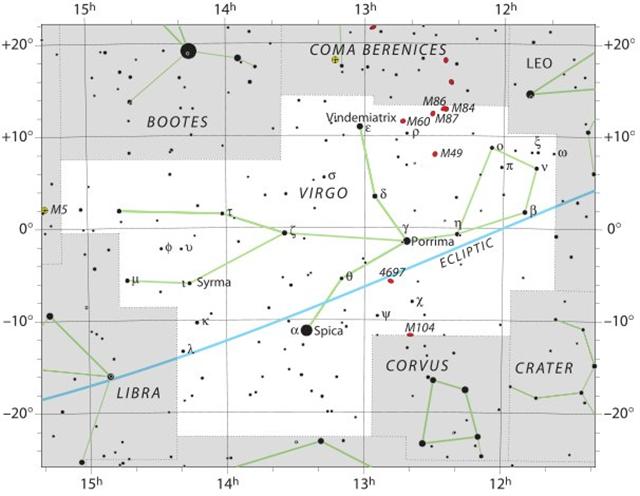 |
|
CLOSE TO THE SUN: |
|
OROMANGA |
PAPA O PEA |
|
JAN 26 (391 = 365 +
26) |
27 (= 91 - 64) |
28 |
29 |
30 |
|
"Febr 18 (49 = 90 -
41) |
19 (233 - 183 = 50 |
20 |
21 |
22 |
|
March 31
ACHIRD (Woman with
Luminous Rays) =
η
Cassiopeiae
(10.7) |
April 1 (91 = 13 *
7)
Legs-15 (Wolf)
ν
Andromedae (11.0),
φ²
Ceti (11.1),
ρ
Phoenicis (11.2),
η
Andromedae (11.4)
*336 = *377.4 -
*41.4 |
2
CIH (Whip) = γ
Cassiopeiae, λ Tucanae (12.4), φ³ Ceti (12.6), μ Andromedae (12.8)
*12.4 + *366 -*41.4
= *337 |
3
φ4 Ceti (13.2) |
4
no star listed (14) |
|
... At the beginning
of 44 B.C. - when
Ceasar was still
alive - the Senate
decided to raise
statues of him in
all the temples and
to sacrifice to him
on his birthday in
the month
Quintilis, which
in honour of him was
renamed July. He was
raised to the status
of a god (among the
other gods of the
state) under the
name Jupiter Julius.
Marcus Antonius, who
this year was consul
together with
Ceasar, became high
priest and
responsible for the
ceremonies. In the
middle of February,
at the time of the
old feast of
Lupercalia [cfr
Lupus =
Wolf], he ran around
naked and whipped
the Roman ladies
with thongs made
from goat-skin [februa],
in order to promote
their fertility ...
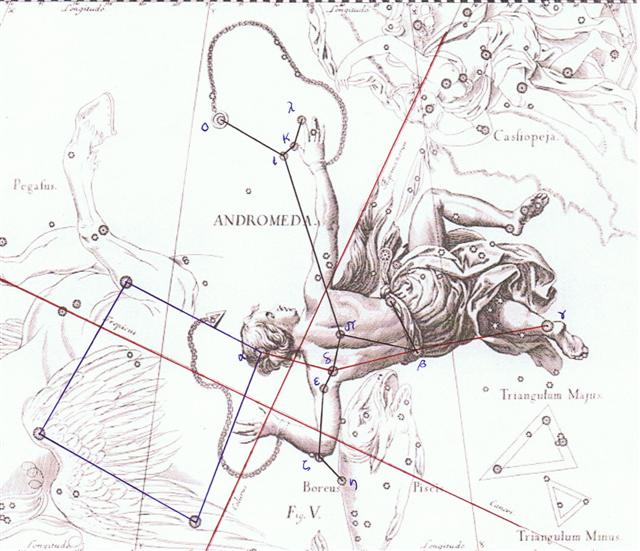 |
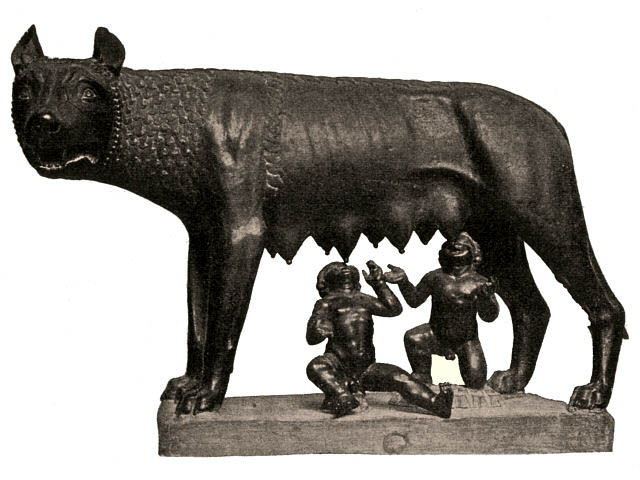
|







 ..
..





















